Focaccia
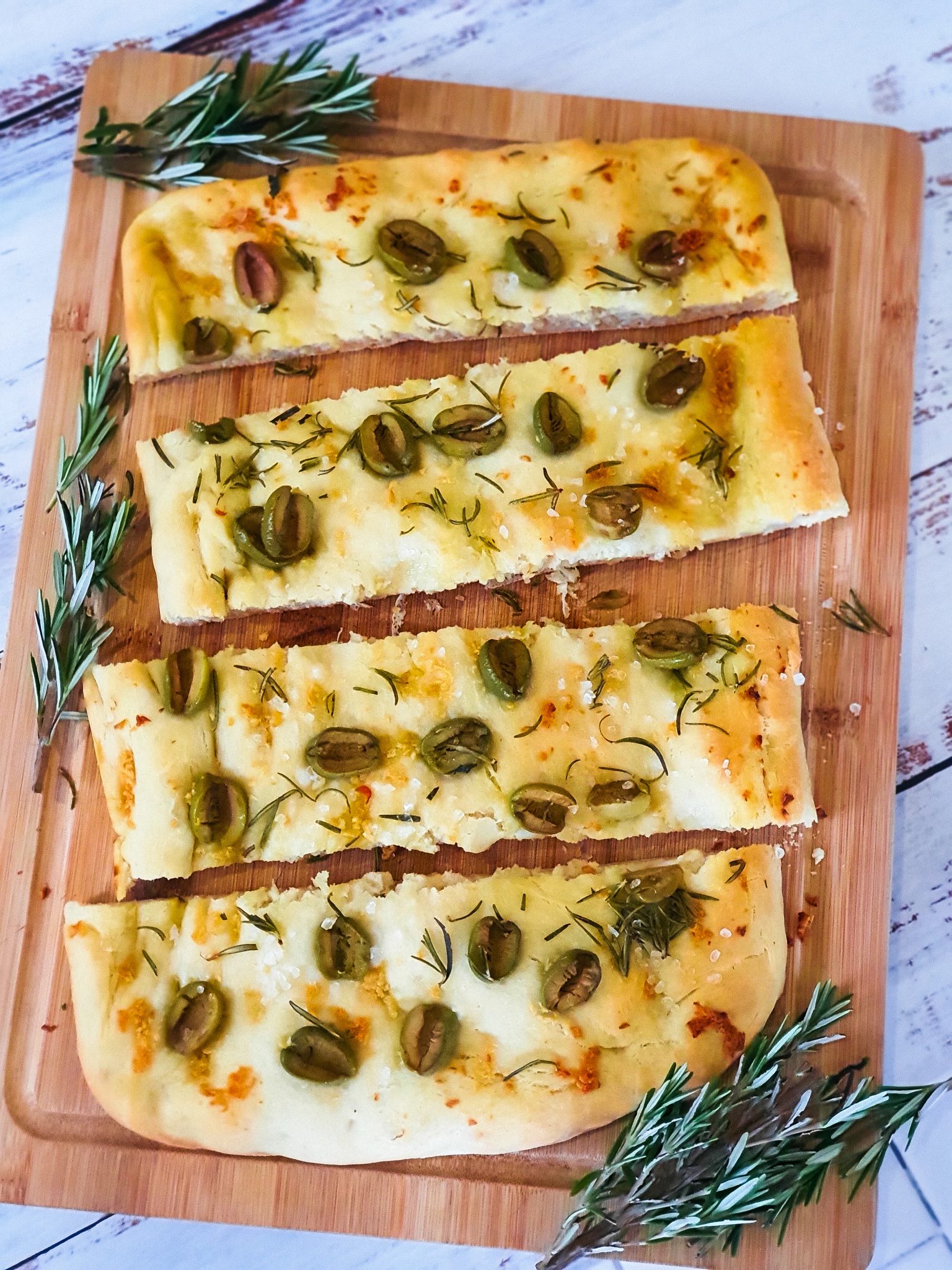
In case you didn’t know, I was born into an Italian family, and focaccia was our bread of choice! Not sliced bread or bread rolls—just golden, pillowy focaccia. Lucky me, right? We ate it for breakfast, used it as sandwich bread for lunch, and dunked it into rich tomato sauces. It was a staple in our home. Now, I won’t lie—making great focaccia can be a labour of love. But trust me, it’s worth it! The good news? You don’t have to babysit the dough all day. You just need a little patience to let it do its thing whilst you relax
In this recipe, I’ve got two options—a quick 2-hour version and a 24-hour version. And honestly, both deliver amazing results. Even the speedy version works like a charm! But if you let the dough rest longer, it develops more flavour, grows beautifully, and turns out even fluffier.
I say experiment with both and decide for yourself if the extra time is worth it!
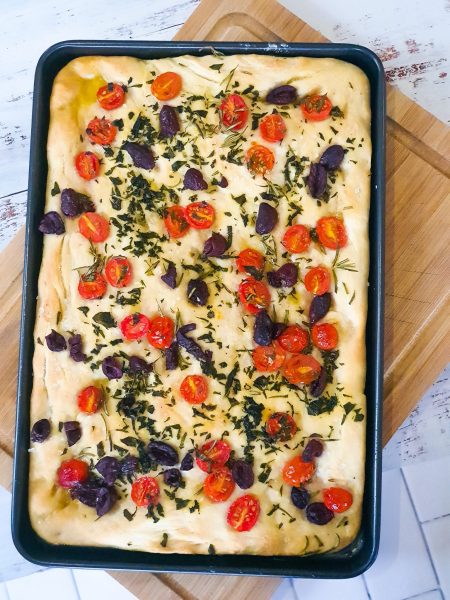
Ingredients
Let’s talk about the ingredients and why they’re great:
- Wheat flour: Provides a hearty texture and rich flavour. It’s a good source of fibre and nutrients, making the bread more filling and wholesome.
- Warm water: It helps activate the yeast, which is essential for the dough to rise properly.
- Olive oil: Adds richness and helps keep the bread moist. It also gives the crust a beautiful golden colour.
- Salt: Enhances the flavour of the bread, balancing the taste and bringing out the natural flavours of the other ingredients.
- Dry yeast: Yeast is what makes the dough rise, giving the bread its light, airy texture.
- Toppings (rosemary, olives, tomatoes, etc.): These add bursts of flavour, colour, and texture. Rosemary gives a fragrant, earthy note, while olives and tomatoes add tanginess and juiciness.
How to Make This Focaccia
Making this recipe is simple, fun, and doesn’t require any special baking skills. Just follow these easy steps, and you’ll have a delicious, homemade bread ready to enjoy.
Step 1: Activate the Yeast
- In a jug, mix 1 ½ cups of warm water with 2 ½ teaspoons of dry yeast.
- Whisk well and let it sit for 5 minutes until it gets bubbly.
Step 2: Mix the Dough
- In a bowl, combine 3 cups of wheat flour and 1 teaspoon of salt.
- Add the yeast mixture and 1 tablespoon of olive oil.
- Stir with a spatula until you get sticky dough. No kneading needed!
Step 3: Let the Dough Rise
- Cover the bowl with plastic wrap and let it sit for 1-2 hours until it rises. Drizzle a bit of olive oil on dough or dust with flour so your glad wrap doesn’t stick.
- For a deeper rise and fluffier result , you can leave it in the fridge overnight.
Step 4: Prepare to Bake
- Drizzle olive oil and sprinkle polenta on a baking tray.
- Place the dough on the tray and cover it again for a second rise (optional).
Step 5: Add Toppings
- Add your favourite toppings like tomatoes, olives, rosemary, or sea salt.
Step 6: Bake, Cool and Serve
- Bake in a preheated oven at 180°C (350°F) for 30 minutes until golden brown.
- Let it cool slightly, slice, and enjoy!
Focaccia
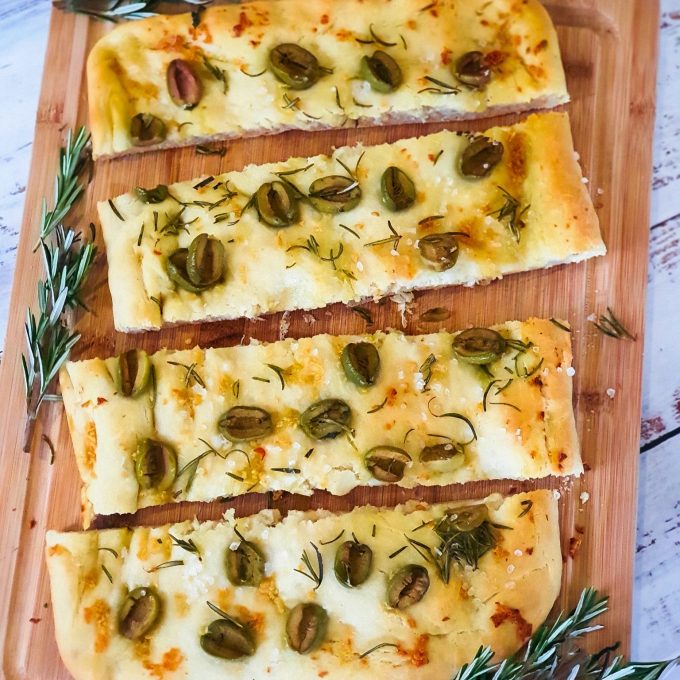
Ingredients
- 3 cups wheat flour
- 1 1/2 cups warm water
- 3 tablespoons olive oil
- 1 teaspoon salt
- 2 1/2 teaspoons dry yeast
- Toppings such as rosemary, olives, tomatoes, etc
Method
- In a jug make your yeasted water by whisking warm water and yeast – let sit for 5 minutes.
- In a mixing bowl combine flour, and salt.
- Add warm water and one tablespoon olive oil, mixing with a spatula.
- You want a dough that is sticky – there is no kneading required.
- Once the dough has formed, place in the bowl with glad wrap and let sit for one to two hours or more (the longer the better)
- For a longer rise you can keep the dough in the fridge overnight.
- For a second rise of the dough grab your baking tray, drizzle with olive oil and polenta. Then place your dough in the tray, covering it again.
- The dough will continue to rise and will eventually make its way to the edges of the tray (this step is optional)
- Top with your favourite things – olives, salt, tomatoes, rosemary, basil.
- Bake in oven at 180 degrees for about 30 minutes.
Recipe Notes
EQUIPMENT YOU NEED
- Mixing Bowl
- Spatula
- Baking tray
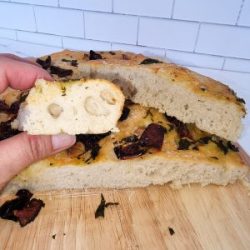
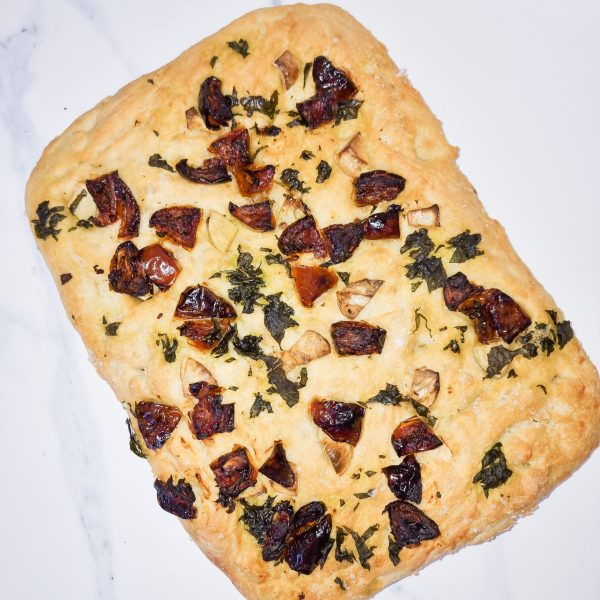

Best things about Focaccia
Here are five reasons why focaccia is the ultimate bread:
1. That Perfectly Crispy, Golden Crust
Thanks to a generous drizzle of olive oil, focaccia develops the most satisfying crunchy crust while staying soft and fluffy inside.
2. Endless Toppings
Classic rosemary and sea salt, mixed herbs? Or garlic and olives? It’s endless what’s possible. I love cherry tomatoes, onions, and garlic too, yum. The possibilities are endless!
3. The Ultimate Dipping Bread
Whether you’re soaking up a rich tomato sauce, mopping up olive oil and balsamic, or pairing it with soup, focaccia makes every bite better.
4. Fluffy, Airy & Full of Flavour
The long fermentation process creates that irresistible light and airy texture with a deep, slightly tangy flavor. The longer you let it rest, the better it gets!
5. It’s Delicious at Every Meal
Enjoy it fresh out of the oven, as a sandwich, alongside dinner, or even toasted the next day. Focaccia is the bread that keeps delivering.
Frequently Asked Questions
Can I use all-purpose flour instead of bread wheat flour?
Yes, you can use all-purpose flour if you don’t have bread wheat flour. The texture will be slightly softer, but it will still taste great. Just follow the same steps.
Can I freeze this bread?
Yes, you can freeze it! Slice it first, so you can easily grab a piece whenever you want. Wrap the slices in plastic wrap or zip lock bags, then place them in a freezer bag. They’ll last up to 3 months in the freezer.
What other toppings can I use?
You can get creative with toppings! Try sun-dried tomatoes, caramelized onions, feta cheese, garlic, chili flakes, or even a sprinkle of sesame seeds. Mix and match to suit your taste.
How do I know if my yeast is active?
After mixing the yeast with warm water, let it sit for 5 minutes. If you see bubbles or foam forming on top, your yeast is active. If nothing happens, the yeast might be old, or the water was too hot or too cold.
What if my dough is too sticky?
A sticky dough is normal for this recipe. If it’s too hard to handle, lightly oil your hands instead of adding more flour. This will help you work with the dough without changing its texture.

